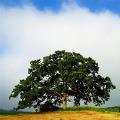
DMT-Nexus member
Posts: 26 Joined: 31-Mar-2013 Last visit: 27-Jun-2017
|
Just got word from my friends across the ocean that they found m. hostilis! They sent pics but I am not entirely sure if it is the right mimosa, it certainly looks close, but I've never had to id any of it myself yet. Any help is greatly appreciated!  DimeTryp attached the following image(s):  14302817_181987615567526_1067454703_n.jpg (99kb) downloaded 100 time(s). 14348629_181987618900859_1229347053_n.jpg (107kb) downloaded 99 time(s). 14349169_181987658900855_1416160127_n.jpg (49kb) downloaded 99 time(s). 14365458_181987612234193_670148409_n.jpg (106kb) downloaded 101 time(s)."Everything is everything..."
|
DMT-Nexus member
Posts: 2889 Joined: 31-Oct-2014 Last visit: 03-Nov-2018
|
It's most likely Gleditsia triacanthos or some version of Gleditsia triacanthos (some are thornless)
(Sweet locust, honey locust)
...but I can't say.
What region or part of the globe was this tree found?
Are there thorns on it anywhere?
-eg
|
DMT-Nexus member
Posts: 2889 Joined: 31-Oct-2014 Last visit: 03-Nov-2018
|
Robinia pseudoacacia has smaller seed pods...
The inner wood of Robinia pseudoacacia is also UV reactive...
Hmm...it's hard to say what you have.
-eg
|

DMT-Nexus member
 
Posts: 372 Joined: 29-Sep-2009 Last visit: 15-Feb-2024 Location: Diagonally parked in a parallel universe
|
Without some flowers and knowing where it's from it will be difficult for anyone to ID with any degree of certainty. Definitely not M. hostilis/tenuiflora though. Some locusts have tested positive for indoles in the roots and certainly bear further investigation. Not that I'm implying that it is a locust. Have them test with Ehrlich's and go from there. I already asked Alice.
|

DMT-Nexus member
 
Posts: 3968 Joined: 21-Jul-2012 Last visit: 15-Feb-2024
|
So very very far off topic : Quote: Don't worry, B. caapi! On my gawd, thanks for the chuckle.    Sine experientia nihil sufficienter sciri potest -Roger Bacon
*γνῶθι σεαυτόν*
|
DMT-Nexus member
Posts: 2889 Joined: 31-Oct-2014 Last visit: 03-Nov-2018
|
pinkoyd wrote:Without some flowers and knowing where it's from it will be difficult for anyone to ID with any degree of certainty.
Definitely not M. hostilis/tenuiflora though.
Some locusts have tested positive for indoles in the roots and certainly bear further investigation. Not that I'm implying that it is a locust. Have them test with Ehrlich's and go from there. In "some simple tryptamines" by keeper trout it was published that that a single analysis was preformed, the results are intriguing... Quote:
Some Simple Tryptamines; keeper trout; pg. 31:
Quote:
Gleditsia triacanthos "Honey Locust"
Positive assay (in roots) co-tlc by Appleseed. Plant reacted
badly to root sampling (stopped producing any leaves for
18 months) so a second sample was never taken.
A positive indole test in Gleditsia triacanthos would be a good start, however simply finding indole compounds not mean you have found an active entheogen, in example: Acer saccharinum (Silver Maple Tree) contains gramine, Which is an indole, but it's an undesirable indole as it may be toxic... So I wonder, what types of indoles are found in locusts trees?...if any. When I was young, every season the Gleditsia triacanthos trees would rain down seeds across the neighborhood. As an enthusiast of R. E. schultes and ethnobotany, but still a fairly ignorant youth, I thought that the Gleditsia triacanthos seeds looked like Anadenanthera peregrina seeds, and thought that there may be tryptamines in the Gleditsia triacanthos as well...but my research proved that this was simply high hopes. Quote: All parts of G. triacanthos contain alkaloid triacanthine, that act hypotensive and antispasmotic on bronchial smooth muscles and intestines, and also support process of burning fat, but is toxic in excess (LD50 35mg/kg, young leaves have highest concentration of triacanthine in this plant, which is up to 1%). Foster and Duke gives remedies made from Gleditsia triacanthos the same safety level as for coffee. Also G. sinensis have many specific alkaloids and triterpenoidal saponins isolated from its parts, of which any should be used with cautious. Fully ripened, dried pods of G. triacanthos are made into tea for indigestion, stomach and duodenum ulcers (except open ones), measles and catarh. It is antiseptic, analgesic, mydriatic, adjuvant and anthelmitic. Cherokee use pods for dysentery, dyspepsia and measles. Alcoholic extracts have been proved effective against cancer. It contain saponins. alkaloids, flavonoids, glycosides and tanins. http://herbsfromdistantl...iacanthos-gleditsia.html Quote:Chemistry Per 100 g, the fruit is reported to contain (ZMB): 23.1 g protein, 4.6 g fat, 66.9 g total carbohydrate, 12.7 fiber, 5.4 g ash. The seed is said to contain 10.6 g protein, 0.8 g fat, 84.7 g total carbohydrate, 21.1 g fiber, 3.9 g ash, 280 mg Ca and 320 mg P. Scanlon (1980), interested in the potential of honeylocust for alcohol production, presents the following analytical data. Differences in sugar content are possible in trees of the same clone grown in different locations. 'Millwood' pods from trees grown in Beltsville, Maryland, contained 21.07% total sugars, while 'Millwood' at Auburn, Alabama, contained 36.8%. Small differences in sugars were found in pods from the same clonal trees collected in different years. Air-dried leaf yields 0.5% of an alkaloid triacanthine C8H10N4 which in intravenous doses of 0.1 mg/kg, depresses the action of the cat heart, the intensity apparently depending on the intensity of effect on the vasomotor centre (145). Heart-wood contains 4–4.8% tannin and also fustin and fisetin (Watt and Breyer-Brandwijk, 1962). The alkaloid gleditschine is said to produce stupor and loss of reflex activity in a frog. Stenocarpine has been used for local anesthesia (Grieve 1931). https://www.hort.purdue....iacanthos.html#Chemistry There are a few varieties of Gleditsia triacanthos... "Gleditsia triacanthos var. inermis" does not produce thorns, this is the variety which is common in my area. Hybridization of honey locust with water locust (G. aquatica) has been reported. Other varieties include : "Moraine" (Gleditisia triacanthos f. inermis ‘Moraine’) which is a seedless male cultivar. Then there is "Skyline" (Gleditisia triacanthos f. inermis ‘Skyline’) which is a male (fruitless) cultivar with a more pyramidal shape. -eg
|
DMT-Nexus member
Posts: 2889 Joined: 31-Oct-2014 Last visit: 03-Nov-2018
|
...I really hope that you are not out there just chopping down trees.
-eg
|